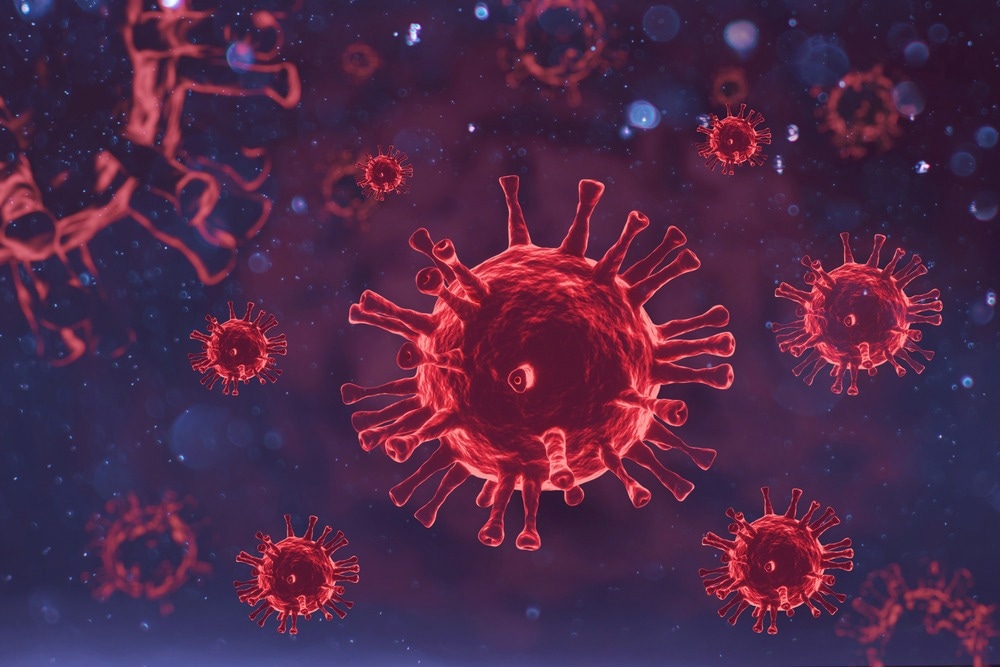The magnitude and duration of the protective effect of prior infection and hybrid immunity against Omicron infection and severe disease
In a recent study posted to the medRxiv* preprint server, researchers reviewed the duration and magnitude of the protective effect of previous severe acute respiratory syndrome coronavirus 2 (SARS-CoV-2) infections (PE) and hybrid immunity (HE, from previous infections and vaccinations) against SARS-CoV-2 Omicron variant of concern (VOC) infections and coronavirus disease 2019 (COVID-19) severity.

Background
The rapid transmission of Omicron and the continual emergence of Omicron subvariants with greater immune-evasiveness and transmissibility has increased global health concerns and warranted reassessments of immune levels among COVID-19 vaccinees and individuals with prior COVID-19 history. To date, Omicron data has been incorporated in only a few systematic reviews, and data on the immune protection induced by HE against Omicron are limited.
About the study
In the present systematic review and meta-regression study, researchers analyzed evidence to determine HE and PE duration and magnitude against Omicron infection outcomes. They also examined the immune protection conferred in terms of vaccine effectiveness (VE) among PE individuals (VE-infected individuals) and among PE individuals who received COVID-19 vaccinations (PE-vaccinated).
Data were searched on Embase, MEDLINE, Cochrane Central Register of Controlled Trials, Web of Science, WHO (World Health Organization) COVID-19 database, Europe PubMed Central (preprints only), and ClinicalTrials.gov databases between January 1, 2020, and June 1, 2022. In addition, the team included preprints identified during the period and published between June 1, 2022, and July 15, 2022. Additional records were identified based on recommendations of previous review authors and WHO’s solidarity 2 network investigators.
Risk of bias (RoB) was assessed using the ROBINS-I (RoB in non-randomized studies of intervention) tool, and random-effects meta-regression modeling was used for estimating the immune protection magnitude at monthly intervals and the mean change in immune protection since the most recent vaccination or infection. HE and PE estimates were compared to previously reported estimates.
Omicron infections were determined by genome sequencing analysis or based on VOC predominance periods according to the GISAID (global initiative on sharing all influenza data) database. The team included studies evaluating the immune protection against Omicron reinfections, wherein HE or PE individuals infected with any SARS-CoV-2 VOC were compared to SARS-CoV-2-naive, vaccinated individuals or PE individuals.
Study designs included were traditional case-control, test-negative case-control, cohort, cross-sectional, randomized controlled trials (RCTs), and non-RCTs. The team excluded case series, case reports, incomplete RCTs, reviews, duplicates, and preprints of articles that were eventually published. Additionally, studies that had no documentation of confirmed previous SARS-CoV-2 infections or days elapsed from the index infections until reinfections were excluded. Sensitivity analysis was performed considering only COVID-19 severity outcome.
Results
A total of 4,268 records were screened. Of these, the full text of only 895 articles was reviewed, and 16 articles documenting data from 26 studies were considered for the final analysis. Of these, 11 and 15 studies involved PE and HE individuals, respectively.
Among PE studies, 97 estimates were observed, of which 27 and 70 had moderate and serious RoB, respectively, and the longest follow-up assessment was performed after 15 months of study initiation. PE estimates against hospitalizations or COVID-19 severity were 83% and 75% at three months and one year, respectively. The corresponding PE estimates for reinfections were 65% and 25%, respectively.
Among HE studies, 153 estimates were observed, of which 78 and 75 had moderate and serious RoB, respectively, with the longest follow-up assessments performed 11 months after prime vaccinations and four months after initial booster dose administration. Against both hospitalizations and COVID-19 severity outcomes, HE estimates involving prime vaccinations or initial booster dose administrations were consistent with >95% follow-up assessments.
Against reinfections, HE estimates involving prime vaccinations after three months and one year post-most recent SARS-CoV-2 infection or vaccination were 69% and 42%, respectively. The HE estimates for initial booster dose administrations at three months and six months were 67% and 47%, respectively.
Against hospitalizations or COVID-19 severity at six months, HE estimates with initial booster vaccinations (VE 95%) or with prime vaccinations only (97%) conferred significantly higher immune protection compared to PE only (80%) and initial booster administration only (77%), or prime vaccination only 65%). Similar findings were obtained for immune protection against reinfections after performing sensitivity analysis.
Conclusion
Overall, the study findings showed that HE and PE conferred swiftly-waning immune protection against Omicron infections but robust and sustained immune protection against Omicron infection-associated hospitalizations and severity. PE provided greater protection against reinfections and more durable protection against hospitalizations or COVID-19 severity than vaccination only. However, HE individuals showed the highest durability and magnitude of immune protection against all COVID-19 outcomes, underscoring the importance of vaccinating PE individuals.
*Important notice
medRxiv publishes preliminary scientific reports that are not peer-reviewed and, therefore, should not be regarded as conclusive, guide clinical practice/health-related behavior, or treated as established information.
- Bobrovitz, N. et al. (2022) "Protective effectiveness of prior SARS-CoV-2 infection and hybrid immunity against Omicron infection and severe disease: a systematic review and meta-regression". medRxiv. doi: 10.1101/2022.10.02.22280610. https://www.shutterstock.com/image-illustration/coronaviruses-influenza-concept-covid19-on-red-1918021709
Posted in: Medical Science News | Medical Research News | Disease/Infection News
Tags: Coronavirus, Coronavirus Disease COVID-19, covid-19, Genome, Global Health, immunity, Influenza, Omicron, Respiratory, SARS, SARS-CoV-2, Severe Acute Respiratory, Severe Acute Respiratory Syndrome, Syndrome, Vaccine

Written by
Pooja Toshniwal Paharia
Dr. based clinical-radiological diagnosis and management of oral lesions and conditions and associated maxillofacial disorders.
Source: Read Full Article
